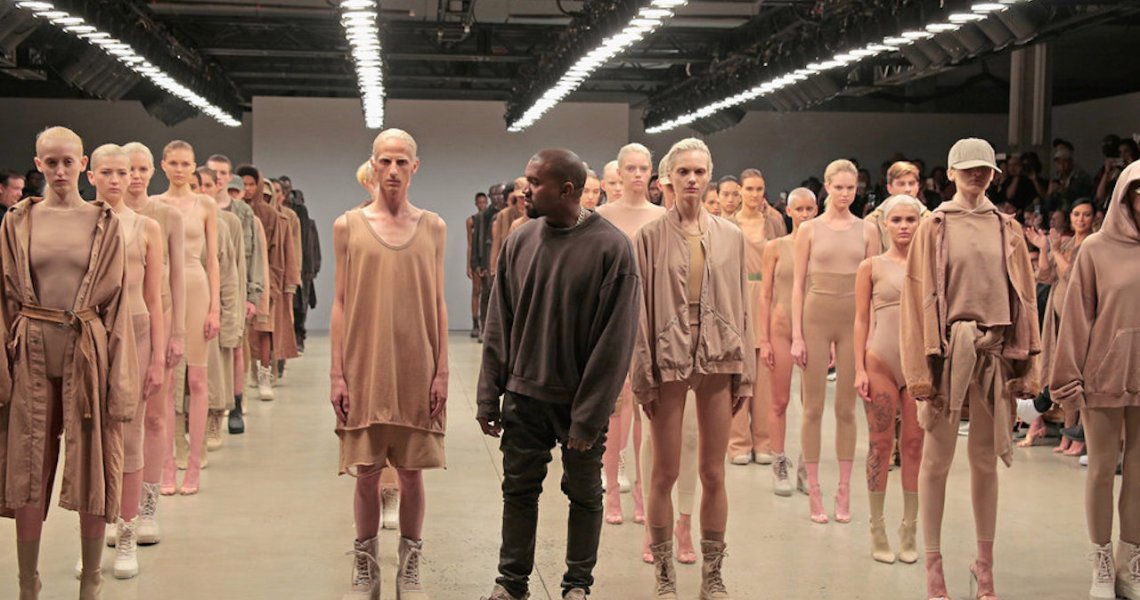The 10-year partnership between Kanye West and Gap, announced on June 26, came as a surprise to many.
Gap was struggling even before coronavirus devastated its retail sales and forced it to lay off about 10% of its corporate workforce. Then there’s West, with his record as a luminary in the worlds of sneakers, streetwear and high fashion. But the move actually fits quite easily alongside West’s history as someone who is constantly going against the most popular trends and common wisdom and trying to marry high fashion and accessibility.
The partnership is emblematic of the ways that fashion and streetwear are evolving: West is working with Gap; Fear of God’s Jerry Lorenzo just dropped the latest collection from his affordable basics brand Essentials. The culture of exclusivity and hype in streetwear is giving way to what both West and Lorenzo have called “democratic fashion.”
The partnership with Gap represents West’s biggest move toward mainstream fashion, but not the first. When his highly hyped collaboration with Adidas was becoming popular, significantly boosting Adidas’ ability to compete with Nike, West shifted production to make the brand’s sneakers more easily available. In 2018, after several years of Yeezy models being released in batches of only a few thousand — the first Yeezy Boost shoe had only 9,000 pairs produced — the Yeezy Boost 350 V2 was released in a quantity that reportedly exceeded a million pairs.
While many average consumers rejoiced at how easy it became to get a pair of Yeezys, which normally entered the resale market at over $1,000, some in the sneakerhead communities predicted that it marked the end of Yeezys as a highly hyped sneaker. So much of sneaker culture is built around exclusivity that the fact that West and Adidas had released a popular shoe that sold well was seen as a bad thing for the brand’s long-term hype.
“When Adidas and Yeezy oversupplied the market, that really crashed the Yeezy resale market,” said Josh Luber, co-founder of StockX. “It used to be insane to get Yeezys for less than $1,000. When they restocked like that, it was bad for the resale market.”
But making Yeezys accessible didn’t kill the brand — in fact, Yeezy exploded in popularity. In 2019, the line sold more than $1.3 billion worth of shoes, an increase of more than 50% from the previous year.
Ad position: web_incontent_pos1
“Kanye has already debunked the idea that exclusivity is the only way to create demand with the younger consumer,” said Krista Corrigan, retail analyst at Edited. “While hype and drop culture still hold a place in today’s streetwear scene, West proved through his Adidas partnership that democratic ideals and attainable retail prices can still elevate a brand to new heights. Kanye certainly has a track record for defying industry norms.”
But while West has had success following the uncool path in his decisions before, choosing Gap as a partner may be a little too much of a contrarian choice. The mall brand has struggled in the last few years. Sales were down as much as 10% all last year, thanks to inventory problems and low foot traffic, leading Gap to call off its plans to spin off Old Navy into a separate company. Those issues were compounded this year thanks to the coronavirus pandemic which led the brand to see a 43% drop in sales, losing nearly $1 billion.
West could be what Gap needs to help its ailing brand image, but the Yeezy brand also runs the opposite risk — that Gap’s poor performance in the last year will drag down Yeezy’s name. But it’s not just Gap that stands to gain from the partnership. West will also have access to Gaps’ “wide distribution network across the U.S,” said Corrigan. Gap has 3,300 stores on 90 countries.
“Gap makes the perfect vehicle for West to grow his Yeezy label,” Corrigan said. “Gap’s struggle to grow store sales and establish a strong identity with its consumer puts the brand in the market for partnership that will pay dividends down the road. With its elevated basics offering and massive existing store base, Kanye recognizes the potential of such a collaboration.”




